October 2020: Mars Won’t Be This Close Until 2035
This month, Mars puts on quite a show: it shines its brightest and best, pairs up with the Harvest Moon, and won't come this close to Earth until 2035!
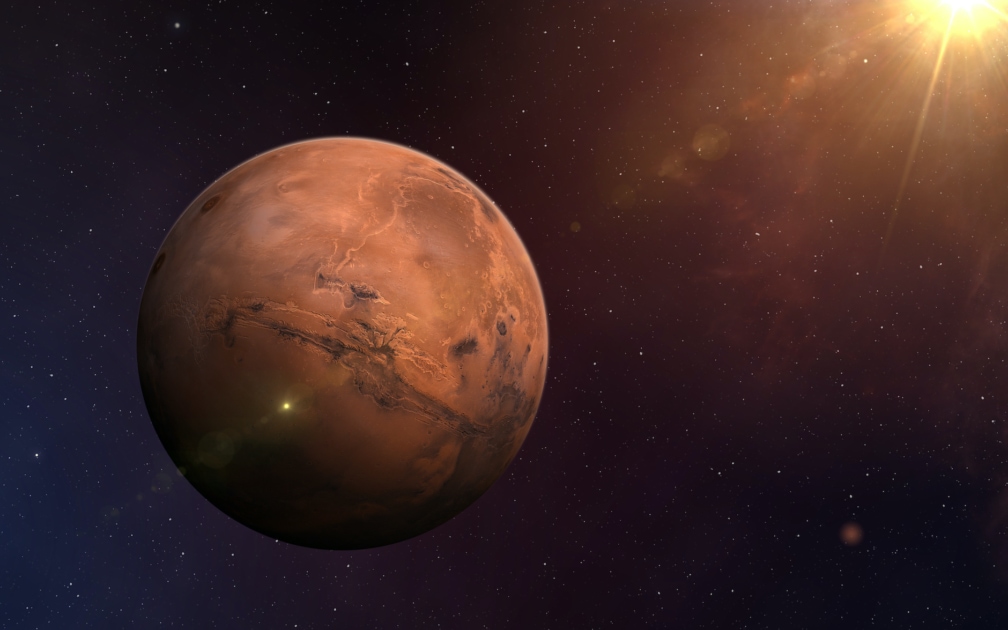
Earth has been approaching Mars ever since September 2, 2019 when the Red Planet was at superior conjunction with the Sun (a superior conjunction is when a superior planet* passes behind the Sun from our point of view; see diagram, below). At that time, Mars was situated on the opposite side of the Sun from Earth at a distance of 248 million miles from the Earth. When it finally emerged into the morning sky some weeks later, it was shining no brighter than a second-magnitude star, making it all the more difficult to see against the bright dawn twilight.

But because Earth moves around the Sun with a mean orbital velocity of 67,000 miles per hour (as compared to 54,200 mph for Mars), it has been slowly creeping up on Mars through all of these months. If you’ve been on board since the race began just over a year ago, you’ve seen Mars increase in brightness—ever so gradually at first, then much more rapidly over the past few months. It now appears some 58 times brighter! At long last, Mars will make its closest approach on October 6th.
Mars is now shining at almost its absolute brightest, an orange-hued lantern of magnitude –2.6. Because it’s a small planet—about half the diameter of Earth—it only puts on a good show when it’s near opposition (see diagram above). And this year’s will be among the best of the best. So now is a great time to go outside and view Mars, whether you’re using your unaided eye, binoculars, or a telescope. Usually, Mars looks like a tiny, disappointing blob in backyard telescopes, but for the next few weeks even a small telescope should show something of the planet’s dark surface markings.
Mars: The Orange-Glowing Star
If you look low in the eastern sky on any clear evening soon after darkness falls and you’ll see a fiery yellow-orange “star” blazing brilliantly. Named for the Roman god of war, Mars is often called the “Red Planet.” But anyone who takes a look will see that it appears more yellowish-orange—the color of a dry desert under a high Sun, which is exactly what you’re looking at. Through most of autumn, Mars shines with a topaz glow that is brighter than any other object in its region of the sky except on those nights when the Moon is in its general vicinity (such as on October 2nd and 29th).
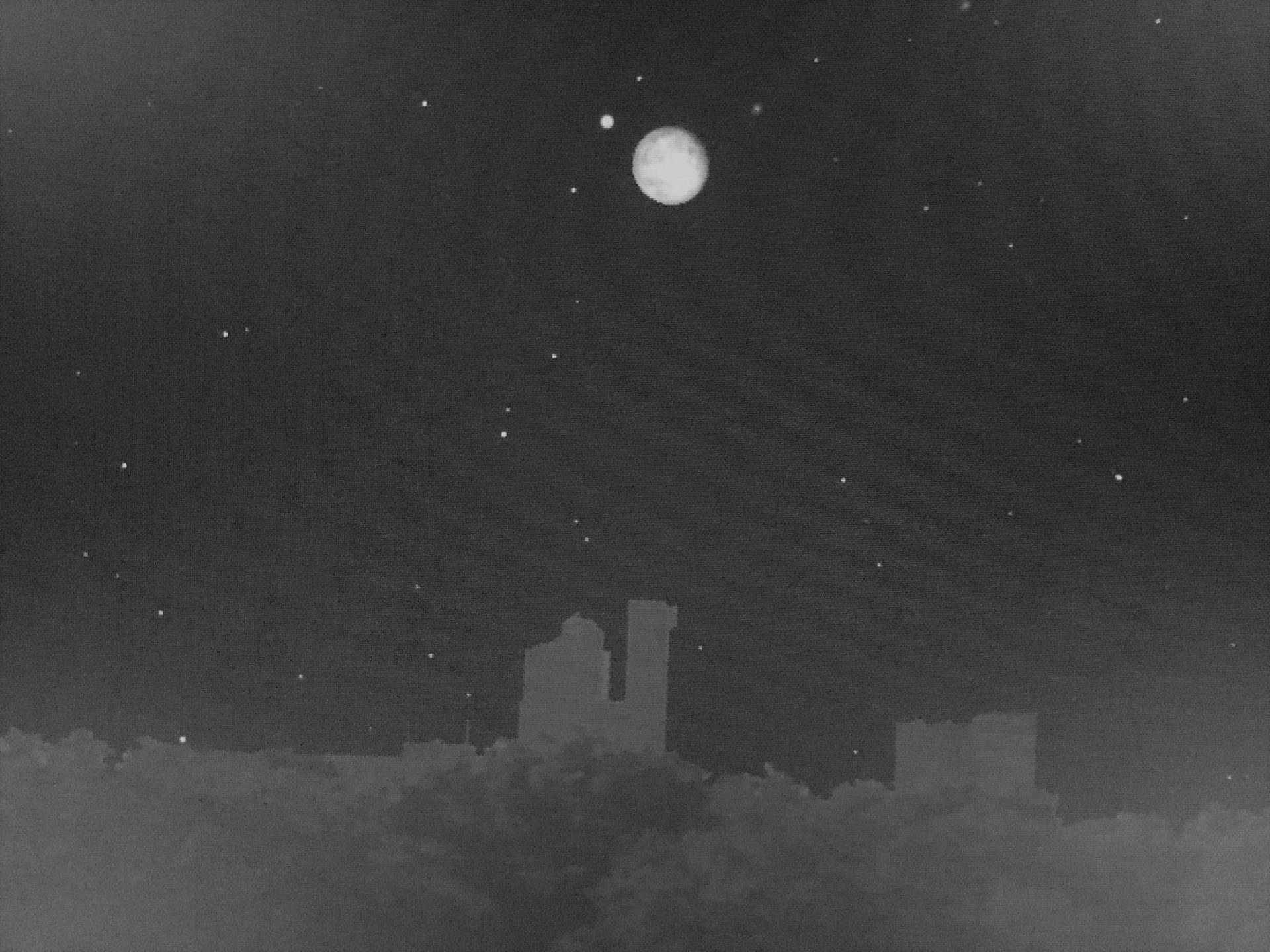
Some people are going to call it a UFO, especially late on Friday night, October 2nd, when it will appear to closely hover above the just-past full Harvest Moon. But of course, it’s not. From now through late November, Mars will easily outshine Sirius (the brightest of all the stars) and through most of October, even Jupiter (the planet normally second in brightness only to Venus).
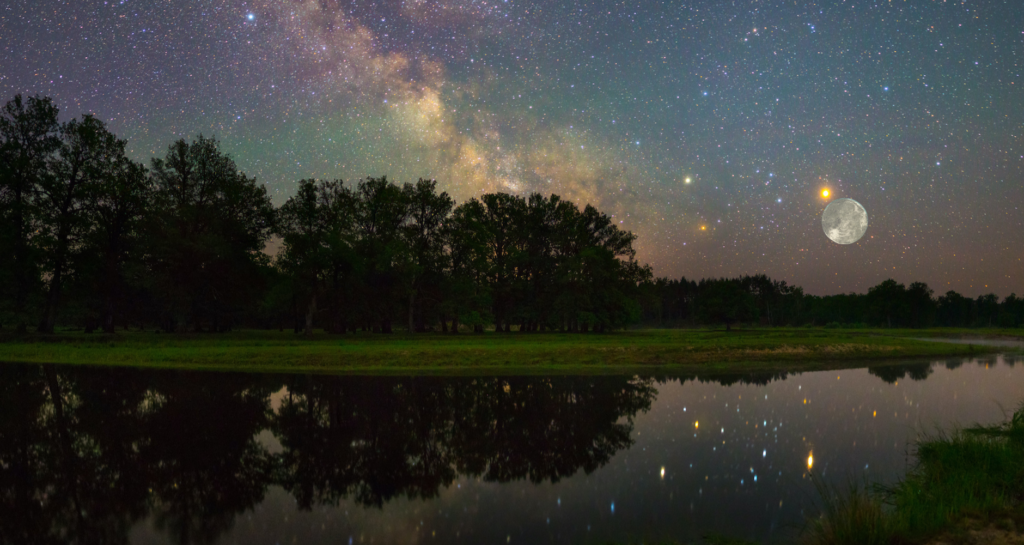
Why October 6th Is A Big Deal
On October 6th, at 10:18 a.m. EDT, Mars will come within 38,586,816 miles of Earth. At that moment, it will take a light beam or radio signal just 3 minutes and 27 seconds to cross the interplanetary gulf between Earth and Mars. The next time Mars will come this close will be September 2035.
October 13: Mars Reaches Perihelic Opposition
On October 13th, Mars will reach “opposition,” the moment when the Sun, Earth, and Mars form a straight line (see diagram, above). When a planet reaches opposition, it lies exactly opposite the Sun in the sky: it rises at sunset, reaches its highest point in the sky at midnight, and sets at sunrise.
So while the 6th has the advantage of being the date of closest approach, the 13th has an advantage with Mars being available in the sky from sunset to sunrise.
If you envision the solar system as a giant racetrack, Earth is moving in the inner lane. Mars comes to opposition when the faster moving Earth overtakes and passes the outer planet. Mars comes to opposition about every 26 months. But because Earth and Mars have elliptical orbits, not all oppositions are created equal. This year’s opposition is superior to most others because Mars will be near its closest point to the Sun (perihelion) when coming to opposition. Such “perihelic oppositions” of Mars (when it approaches to less than 40 million miles of Earth) are rather infrequent, occurring about every 15 to 17 years.
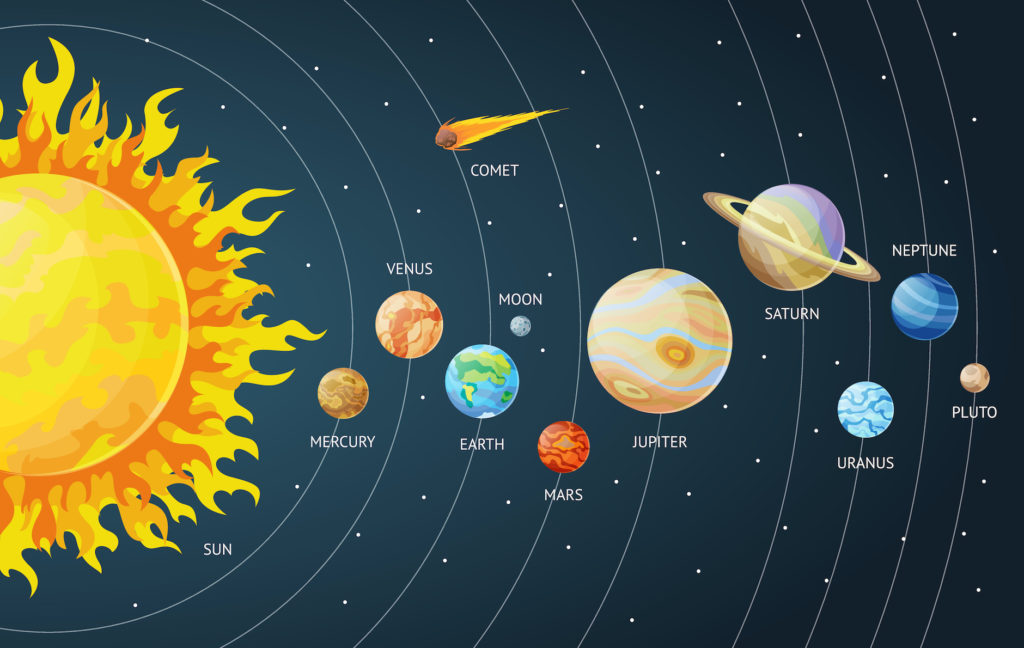
Recent perihelic oppositions saw Mars approach Earth to within 35.1 million miles in September 1956, 34.9 million miles in August 1971, and 36.5 million miles in September 1988. In August 2003, Mars arrived at perihelion just a scant two days after its opposition. The result was the closest Mars has approached Earth (34.6 million miles) in nearly 60,000 years.
Dates For Perihelic Oppositions of Mars
| Date | Distance from Earth (in millions of miles) |
| 2033 – June 27 | 39.3 |
| 2035 – September 15 | 35.4 |
| 2050 – August 14 | 34.8 |
| 2065 – July 13 | 37.1 |
| 2067 – October 2 | 36.9 |
| 2082 – September 1 | 34.7 |
| 2097 – July 30 | 35.5 |
| 2099 – October 18 | 39.0 |
Although the very best views of Mars will be behind us after October 13th, its fading brightness will be very slow and gradual. It will still outshine Jupiter—the planet that’s usually second in brightness only to Venus—through October 27th. And it will continue to rival Sirius until November 20th.
The next opposition of Mars will come in early December of 2022, but because Mars will then be more than 12 million miles farther from Earth than this month’s extreme opposition, it will appear to shine with just one-half of its current radiance. In telescopes it will appear 24 percent smaller than it does now.
Interestingly, there is a long-term cycle of 79 years where the circumstances of a specific Mars opposition will replicate almost exactly. On October 3rd, 1941 for instance, Mars made a similarly close approach to Earth. In fact, in 1941 at its closest, it was just 414,000 miles closer to Earth than it will be this year on October 6th. And 79 years from now, on October 10, 2099, Mars will again make another unusually close approach to Earth, though falling just short of matching this year’s by 400,000 miles.
We are now in the “home stretch” of 2020’s close encounter with the planet Mars.
A few notes about opposition: The moment of closest approach and opposition never occur on the same day. They usually occur up to a week apart (in this case, October 6 and October 13, respectively). So when astronomers speak of favorable oppositions of Mars, they will usually give the distance of the closest approach. Again, it only amounts to a few days and the difference in miles only amounts to (at most) a few hundred thousand miles. In 2035 for example, opposition is on September 15, but the closest approach will come on September 11.
* Superior planets are planets which are further from the Sun than Earth: namely Mars, Jupiter, Saturn, Uranus, Neptune, and Pluto.

Joe Rao
Joe Rao is an esteemed astronomer who writes for Space.com, Sky & Telescope, and Natural History Magazine. Mr. Rao is a regular contributor to the Farmers' Almanac and serves as an associate lecturer for the Hayden Planetarium in New York City.



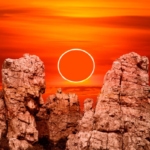

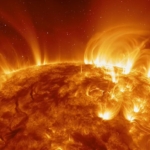
I was on Mars 60,000 years ago, and interplanetary gravitational influences had temporarily increased Mars’ axial tilt, allowing the Sun to completely evaporate all the polar ice every summer.
Those were the days on Mars, I can tell you. Mars didn’t look at all like he does today. Wild times. You can’t imagine.
I”m sorry, but I have to questions your claim. I never saw you there once, and there were not that many of us back then!!!
I hope we send a message since Mars will be so close. Wonder if we will receive an answer?
I wonder what the Martians are saying about Earth. ” Wow, look how bright that blue planet is.”
Could be! 😀